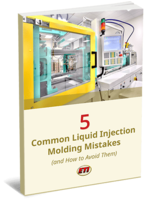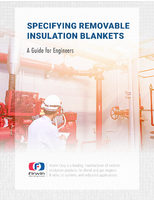The Curing of Metals Using Infrared - The Demand for Quality Finished Light Standards
The president of a major US-based lighting standards manufacturer knew that "the market for finished steel light standards is extremely competitive. To increase our market share we had to offer a higher-quality product. We also knew that our customers would not accept a price increase, so our only option was to increase productivity."
The company did just that when it replaced the air-dried, acrylic finish on the light standards with a powder coating cured with medium and short wave infrared (IR). As a result, the poles now supplied, for street and athletic field lighting and for traffic sign and signal supports, have one of the most attractive and durable finishes available in the industry.
The company's goals for the new finishing line were to:
o Increase productivity, without an increase in cost per part
o Produce standards with a colorfast coating that will last about 20 years
o Eliminate costs of removing noxious fumes and hazardous waste
Optimize use of available floor space.
The Old Way
Formerly, the manufacturer cleaned rust from steel poles with a volatile solvent, then hand-sprayed them with a primer. After the primer air- dried, an acrylic enamel finish was sprayed on and also allowed to air-dry. Each coat required between 2 and 8 hours to dry, depending on the weather.
Although customers seemed satisfied with poles finished in this way, from the company's standpoint the procedure had a number of drawbacks, including:
o Low productivity - only 30 finished poles a day.
o Poor materials utilization and high maintenance costs - only about 40% of the paint was actually applied to the poles. The remainder was waste and the paint area had to be scraped and scrubbed once a week.
o EPA requirements - paint and cleaner had to be stored, handled and disposed of according to strict regulations, and a powerful ventilation system was required to remove solvent fumes.
Finding a Better Way
Based on more than a year of research, the compnay chose to replace liquid paint with a dry, powder coating because of the superior appearance and abrasion resistance of powder finishes.
Since powder coatings are applied by spraying electrostatically-charged powder onto the poles, thickness and uniformity are easily controlled. The powder is cured by heating to about 400°F, which causes it to melt and bond to the underlying substrate. Traditionally, powder coatings are cured in gas convection ovens. However, convection heating is slow and difficult to control, and the large ovens are energy-inefficient. Since the company was trying to avoid such problems, the research included finding a better curing method. The choice was medium and short wave electric infrared heating.
New Finishing Line: Fast, Efficient and Automated
The company's light standards actually consist of two parts - the pole itself, made of 7- to 11-gauge steel, and the heavier base plate, usually of 3/4- to 2-inch steel.
The welded assembly is loaded onto an overhead conveyor, cleaned by shot blasting, then powder coated. The coating booth has 4 automatic spray guns and 2 manual guns for coating odd-shaped parts.
Coated poles are conveyed to a two-stage IR oven for curing. The first stage is 19 feet long and has 3 zones of 2500 watt medium wave IR heaters. There are 38 heaters in zone 1 and 18 each in zones 2 and 3. Each zone has its own 220 volt power supply. Cure time in the medium wave oven is from 2-5 minutes, depending on the length and diameter of the poles.
The second stage of the oven is used to complete the curing of the much thicker coating on the bases. This section is 10 feet long and has 2 zones each with 7 short wave IR heaters. These heaters produce 3000 watts at 440 volts, and cure the coated base in 2-4 minutes.
The Results: The Best Finish in the Industry
With its new finishing line, the company has met its major goal of:
o Increased production - The same work crew now produces up to 120 finished poles a day, rather than 30. Among the benefits of using a powder coating rather than liquid paint are:
o Materials savings - Now 95% of the powder is actually applied to the poles, rather than 35-40% of the liquid paint.
o Lower maintenance - Since almost all the powder coat- ing adheres to the light standards, very little cleanup is required.
o Safer and cleaner operation - The coating contains no solvent, so there are no toxic fumes to remove and no problems meeting EPA requirements.
o Flexibility - There is only 45 minutes down-time in switching coating colors. Curing the powder coating with IR radiation has resulted in:
o Energy savings - Curing the powder coating with electric IR costs only $0.86 per pole. Curing in a gas oven would have cost $1.59 per pole.
o Space savings - The electric IR ovens occupy only 105 square feet of floor space. A gas oven would have required about 2000 square feet and a much larger conveyor system. Based on the company's cost of $6 per sq ft, this translates into a saving of $11,370 per year.
o Faster curing - It takes 4-9 minutes to cure the coatings in the infrared oven compared with 4-16 hours for air- drying. A convection oven would require 25-40 minutes.
o Fast response - The IR oven reaches operating temperature within 12 seconds of power on A gas convection oven requires about 1 hour and must be held at temperature even when empty.
o Better control - The heater banks can be moved in and out and controlled individually to optimize curing different- sized poles.
What Did it All Cost?
Total cost of the new powder coating application and curing line was approximately $500,000, with the IR oven accounting for about $100,000. A gas convection oven capable of the same production rate would have cost about $150,000, and it would have required much more floor space and a more expensive conveyor system.
The Bottom Line: An Industry Leader
As a result of the new finishing line, the company can offer its customers a superior, standard-setting product at a competitive price.
For more information, visit our website at:
http://www.noblelight.net/




